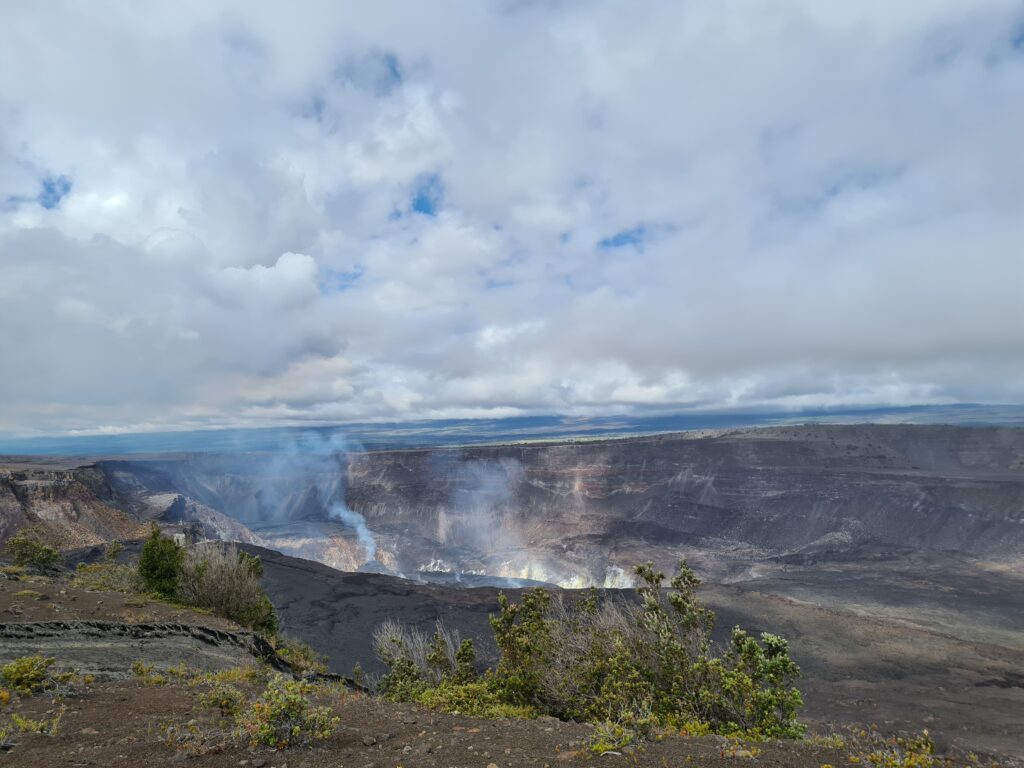
Visit to Hawaii Volcanoes National Park: A comprehensive guide to visit the park and unique features and attractions (updated 2023)
A visit to Hawaii Volcanoes National Park will be the highlight to visiting the Big Island of Hawaii. Kilauea volcano lies at the heart of the main caldera and center of the park with large canyons that open to a smaller crater called Halema’uma’u which is the most active volcano on the islands to witness.
I share all my favorite hiking trails, unique vista points, art in the park and places to see the volcano eruptions and other unique features in the park area below. Use this extensive guide below to show you the highlights to visiting, the top attractions, hikes and must do visits around Volcanoes national Park
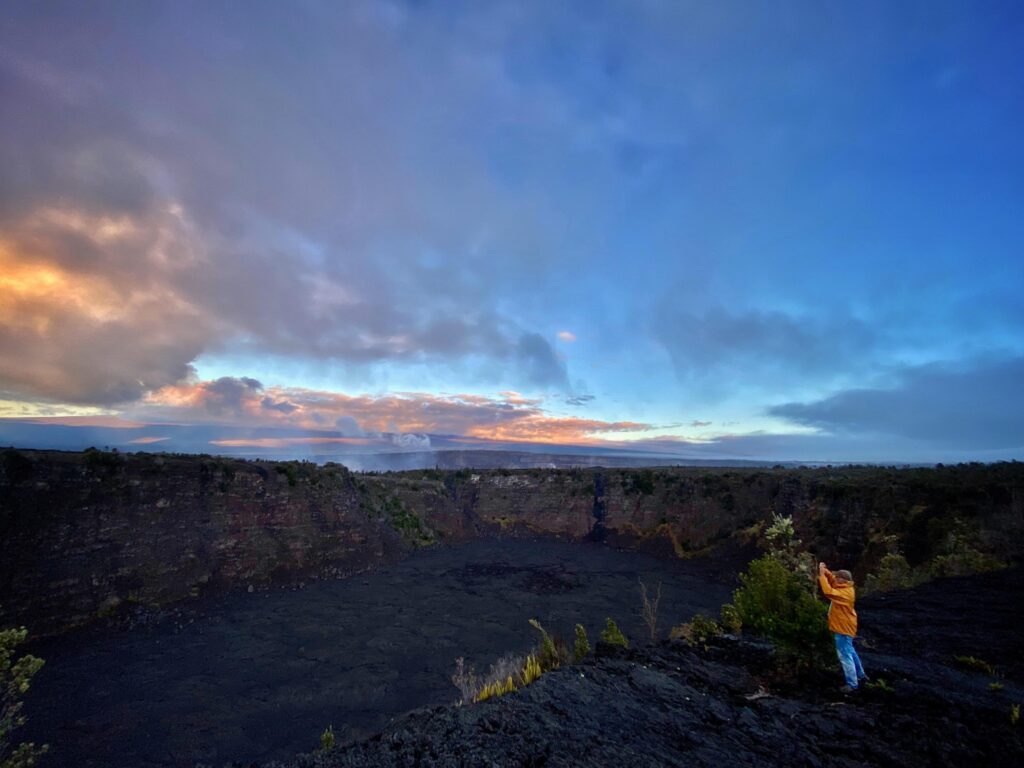
A short history of Volcanoes National Park and Kilauea Volcano
The Big Island or Hawaii island is an island of five main volcanoes: Mauna Kea, Mauna Loa, Kohala, Hualalai and Kilauea. The largest volcano in the world in terms of volume and earth covered is Mauna Loa which is still active. Mauna Kea is at 13,796 feet which makes it the tallest mountain in the state and if measured from the ocean floor, the tallest in the world. Hawaii Volcanoes National Park encompasses both Mauna Loa, Mauna Kea and Kilauea in the park areas.
As the youngest of the island chain, Kilauea is the youngest and cycles between being active and asleep but as we note today 10/20/2021, it is active in the crater area of Kilauea at Halema’uma’u where you can actually see lava spewing the plumes of smoke and lava lighting up the night skies around the park grounds from night to early morning timeframe when it is more vivid and glowing.

How to get to Volcanoes National Park
To get to Hawaii Volcanoes National Park from either Kailua Kona or Hilo town, drive down Hwy 11 to the park entrance gate. From Kona to the park is 82.8 miles or about a two-hour drive. From Hilo to the park is about 30 miles or a forty-minute drive. Passing the entrance gate, first stop is to head directly to the visitor’s center about a ¼ straight down to get a map, talk to rangers about what is open and new in the park and visit the gift store or restrooms.
From Kona International Airport the drive to the on the belt road is about 97 miles or approximately 2.5 to 3 hours as a drive. It is recommended to stay around Volcano Village or Hilo so you can get more time to visit the park and surrounding area.

12 Top things to do around Hawaii Volcanoes National Park
You can easily spend the entire day or stretched out longer to experience the best of the park area, do some fantastic hikes, road trips and evening visiting the park at night time for some of the best lava viewing experiences in the park area. Here are some of the top things to do at Volcanoes National Park now.

- Visitors center orientation center
If you are looking for information, maps and talking with a ranger and talking story about the origins of the park or just use the facilities the visitor’s center is right off the park entrance. You can also visit the Volcano Arts center a little further down from the visitor’s center to see some of the best Big Island crafters and fine artist displaying some of the original works in the gallery

2. Visit the observation overlook at Halema’uma’u crater
The first drive to the observation areas of Halema’uma’u is quite impressive with expansive views over the crater and the entire Kilauea caldera system with the large sunken canyons and then the lava crater located inside the caldera. Best viewing times to see the lava tend to be later in the evening or early morning to see the plumes coming out of the crater floor
Find the best observation areas of Halema’uma’u crater:
Discovering the finest observation spots for gazing into the depths of Halema’uma’u Crater is an absolute must when exploring Hawaii Volcanoes National Park. Here’s a guide to some of the best vantage points:
- Jaggar Museum and Overlook: The Jaggar Museum provides a comprehensive view of Halema’uma’u Crater. It’s a superb place for both day and night observations. During the day, you can witness the smoky plumes rising from the crater. At night, the illuminated lava lake creates a mesmerizing spectacle. It’s a prime spot for geology enthusiasts and stargazers alike.
- Halema’uma’u Overlook: This viewpoint offers a closer look at the crater’s inner workings. You can often see the lava lake’s activity, especially after sunset when the red glow becomes more pronounced. It’s a fantastic spot for photographers and volcano enthusiasts.
- Kīlauea Iki Overlook: While not as close as the other viewpoints, the Kīlauea Iki Overlook provides a panoramic view of both Halema’uma’u Crater and the Kīlauea Iki Crater. It’s a great place to take in the grandeur of the entire caldera and appreciate the volcanic landscape.
- Crater Rim Trail: If you enjoy hiking, the Crater Rim Trail is an excellent choice. This trail encircles Kīlauea Caldera, offering various vantage points to observe Halema’uma’u Crater from different angles. The hike provides an immersive experience, allowing you to feel the volcanic terrain beneath your feet.
- Steam Vents Area: While not a direct observation point, the Steam Vents area provides a unique perspective on Halema’uma’u Crater. You can witness the plumes of steam rising from the ground, adding an element of mystery to your crater exploration.
It’s important to check with park rangers for the most up-to-date information on accessibility and safety, as conditions at the volcano can change rapidly. Observing Halema’uma’u Crater is an awe-inspiring experience that showcases the dynamic and ever-changing nature of the Hawaiian volcanoes.
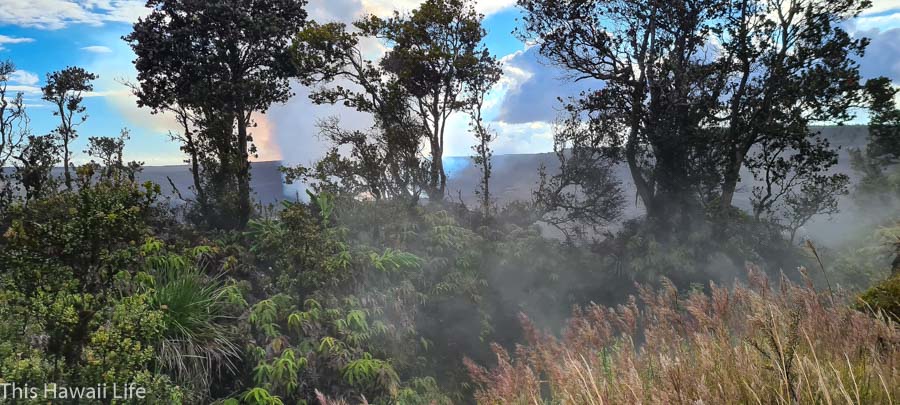
3. Steam vents and viewing area
Towards the observation area, the steam vents and viewing area is another nice spot to view the caldera and Halema’uma’u crater along with some short trails along the rim and also see the various openings of steam vents that emits volumes of hot steam into the skies that is a fun experience to witness and even feel.
The Steam Vents area of Kilauea offers a fascinating natural spectacle. Located within Hawaii Volcanoes National Park, this geothermal wonder is a must-see for anyone visiting the Big Island.
As you stroll through the Steam Vents area, you’ll encounter openings in the earth’s surface from which plumes of steam rise into the air. These steam vents result from the geothermal activity beneath the ground, where groundwater seeps down to hot volcanic rocks, creating steam as it’s heated. The billowing clouds of vapor create an otherworldly atmosphere that’s both eerie and captivating.
The steam vents are surrounded by lush vegetation, adding a lush contrast to the volcanic terrain. Visitors often enjoy feeling the warm, moist air and witnessing the forces of nature at work. It’s a unique and mesmerizing experience, giving you a glimpse into the power and energy that lies beneath the surface of Kilauea.
However, it’s important to note that while the steam vents are a natural wonder, they also emit sulfur dioxide gas, which can be harmful to inhale in large quantities. So, it’s recommended to stay upwind of the vents and avoid spending too much time in the area, especially if you have respiratory issues. But with the proper precautions, the Steam Vents area offers an awe-inspiring encounter with the volcanic forces shaping Hawaii’s landscapes.

4. Kilauea Iki Crater
This fantastic trail leads you from the parking lot of the Kilauea Iki Crater first along the rim areas of the Kilauea caldera through forested and lush greenery with peekaboo vies to the caldera floor and eventually to the Kilauea Iki crater which you eventually hike down to the floor of the crater. Only formed less than 50 years ago, the trail is about 4 miles as a loop trail and also passes the Thurston Lava Tube.
Hiking the Kīlauea Iki Crater Trail is a remarkable adventure within Hawaii Volcanoes National Park. Here are the essential details for this captivating experience:
Trail Description: The Kīlauea Iki Crater Trail is a 3.3-mile loop that takes you across the floor of the Kīlauea Iki Crater, offering a unique opportunity to explore a volcanic landscape. The trailhead is located at the Kīlauea Iki Overlook, which provides a stunning view of the entire caldera.
Difficulty: This hike is considered moderate. While it doesn’t have steep inclines, it does involve some rocky and uneven terrain. Hikers should be prepared for a descent into the crater and a return climb, so proper footwear and hydration are essential.
Scenic Highlights: The trail offers a variety of stunning vistas. As you descend into the crater, you’ll walk through lush rainforest, with native ferns and ‘ōhi’a trees surrounding you. The real highlight is crossing the solidified lava lake, where you can still see steam vents and cracks in the ground. The surface is uneven, and you’ll feel like you’re walking on another planet.
Venturing into the Caldera: Once you’re on the crater floor, you can explore the vast, flat expanse. It’s advisable to stay on the marked trail, as the crust can be thin in some areas, and the heat from the still-warm volcanic rock below can be dangerous.
Climate: The weather within the crater can vary. It’s often cooler and wetter in the rainforest sections, so be prepared for rain, and pack rain gear. The crater floor itself can be quite hot due to geothermal activity, so dress accordingly.
Duration: The hike typically takes around 2-3 hours, but this can vary depending on your pace and the time you spend exploring the crater.
Safety: Always check with park rangers for current conditions and any safety advisories. It’s crucial to carry enough water, wear appropriate footwear, and be mindful of the weather, as conditions can change rapidly in the park.
Closures: The trail may occasionally close due to volcanic activity or hazardous conditions. It’s essential to check for any closures or warnings before embarking on the hike.
Hiking the Kīlauea Iki Crater Trail is an unforgettable experience that allows you to walk through the geological history of Hawaii. It’s an opportunity to witness the power of volcanic forces up close and personal, all while surrounded by the lush beauty of the island’s flora.
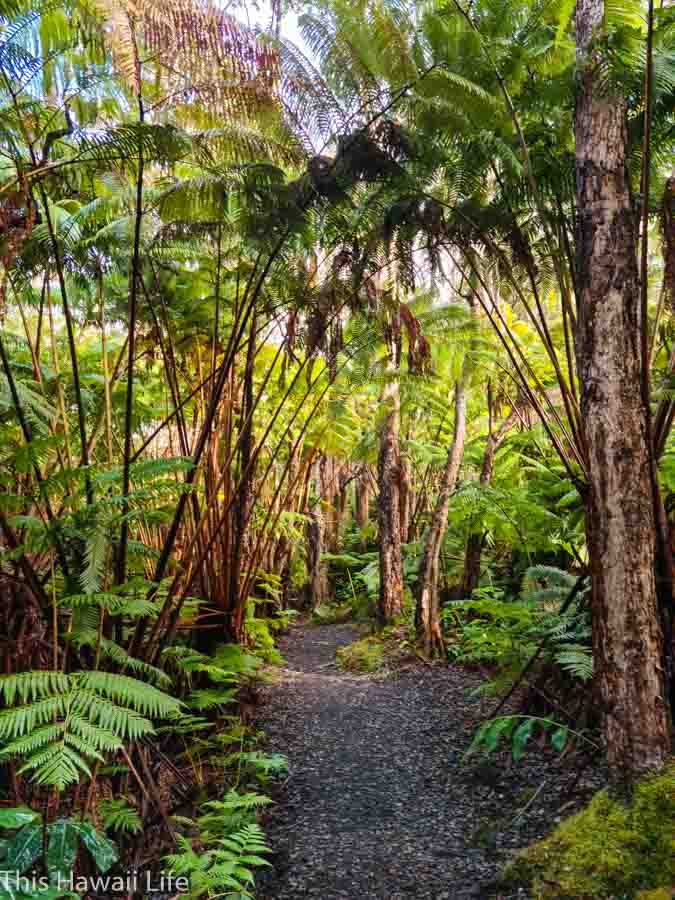
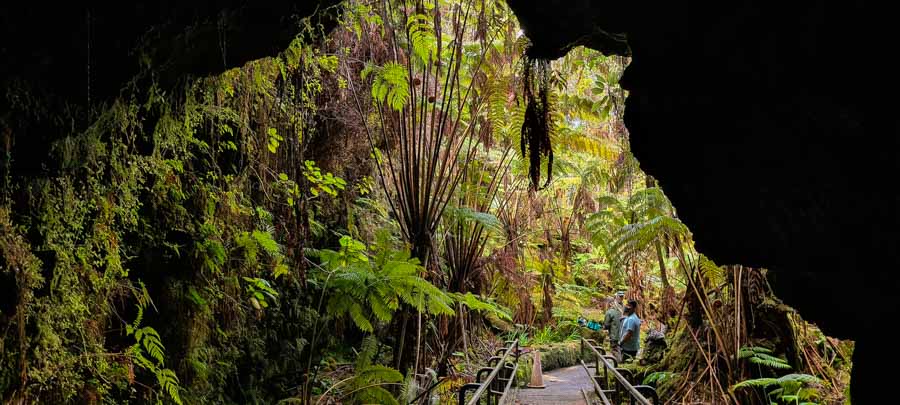
5. Thurston Lava Tube
This spectacular lava tube is a very fun and easy hike and parking is accessible on the main Chain of Craters Road or the Kilauea Iki parking if the parking area is full. The short hike around the Thurston Lava tube is about 1/3 mile and takes about a half hour walking through gorgeous rainforest with giant tree ferns and native plants and eventually into a large lava tube structure you can explore. Well lit and on solid grounds, the lava tube walk is safe and you have to climb a short staircase to get to the floor area of the rainforest which heads to the lava tube and back up to the parking lot. Check out our post visiting Thurston Lava tube here for more details.
Tip – come early to this attraction since parking is limited or park at the Kilauea Iki parking and hike the short-forested trail up to the Thurston lava tube.


6. Devastation Trail
One of the most scenic places to hike in relatively flat graveled surface is at the Devastation trail. Park at the Devastation parking area towards the end and walk along the lava fields and through more lush forested areas that have amazing views to the Halema’uma’u crater. This trail has varied terrain from exposed lava fields of devastation to more lush, green forested canopies.
Check out my post on hiking the Devastation trail here for more details and pictures of the area.

7. Do a scenic road trip down the Chain of Craters Road
The long drive off the Chain of Craters Road takes you all the way down the park grounds to the ocean where you can stop at many points along the way for viewpoints or designated trails that you can do at any of these places that fit your time and skillset. At the end of the road is a spectacular sea arch and petroglyph area called Pu’uloa that you can hike to.
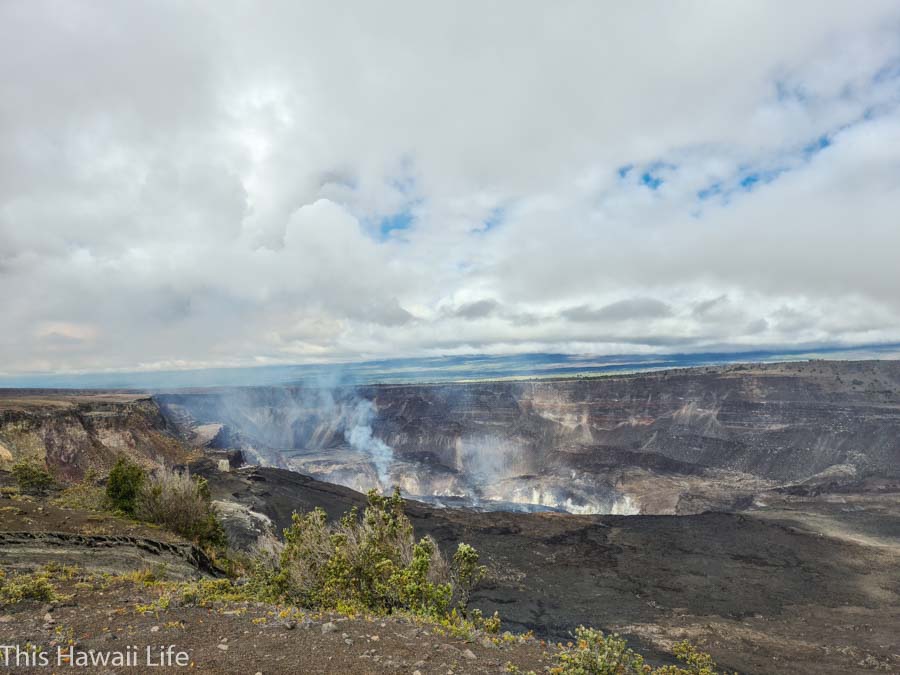
8. Keanakāko’i Crater
Probably the best spot to viewing the lava areas of Halema’uma’u crater, the Keanakāko’i Crater hike is just to the left side of the Devastation trail parking lot. You hike about 1.5 miles roundtrip on a nice paved road to the viewing area that fronts the crater with fantastic views of lava, plumes and steam vents from the crater. The best viewing times are at night or early morning so get their early because the parking lot is limited with a line of cars trying to park.
Tip – Expect long lines to the parking lot or arrive later in the morning or very early morning when just a few are brave enough to arrive 3 – 6am in the morning for lava viewing
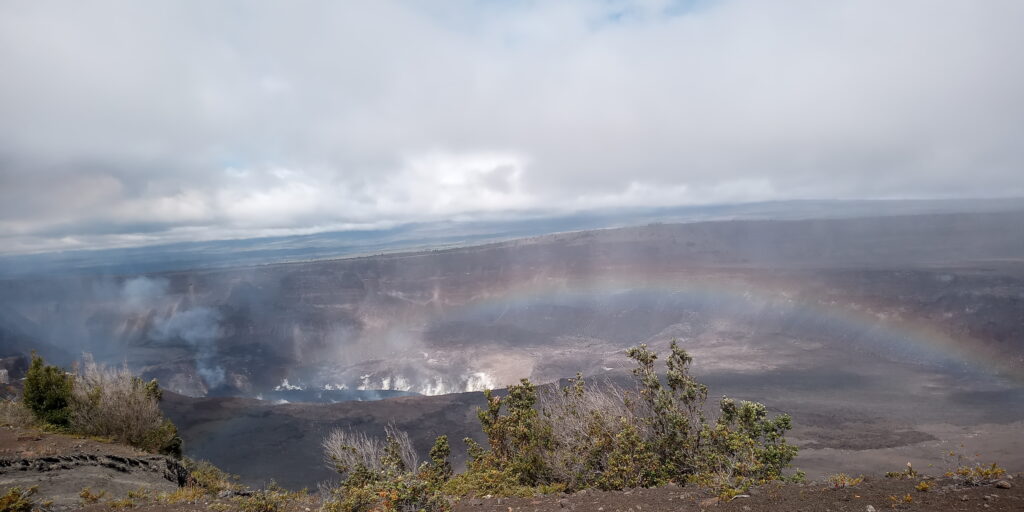
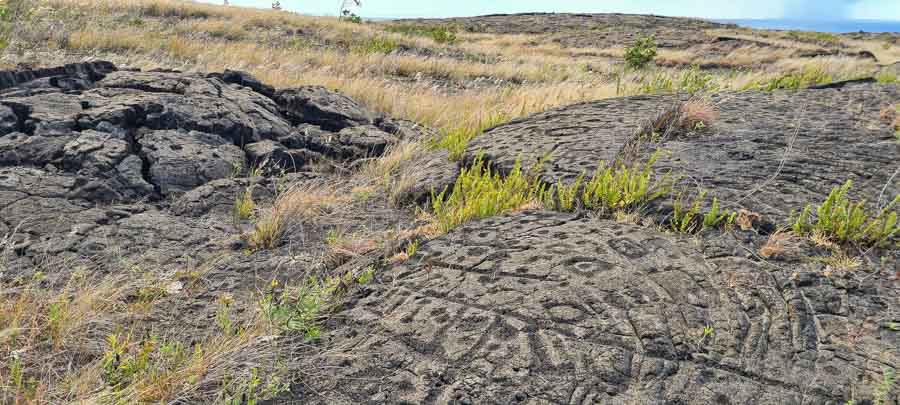
9. Pu’uloa Petroglyph fields
One of the largest petroglyph fields in the state is located at Pu’uloa Petroglyphs which is located in the lower section of the park and worth a drive. The petroglyphs can be seen through a short loop hike of about 1.4 miles roundtrip and then you enter a boardwalk area that protects the petroglyphs from being walked on. There are many information signs that explain the history of the petroglyphs and you can check out our post to visiting Pu’uloa here for more details and information.
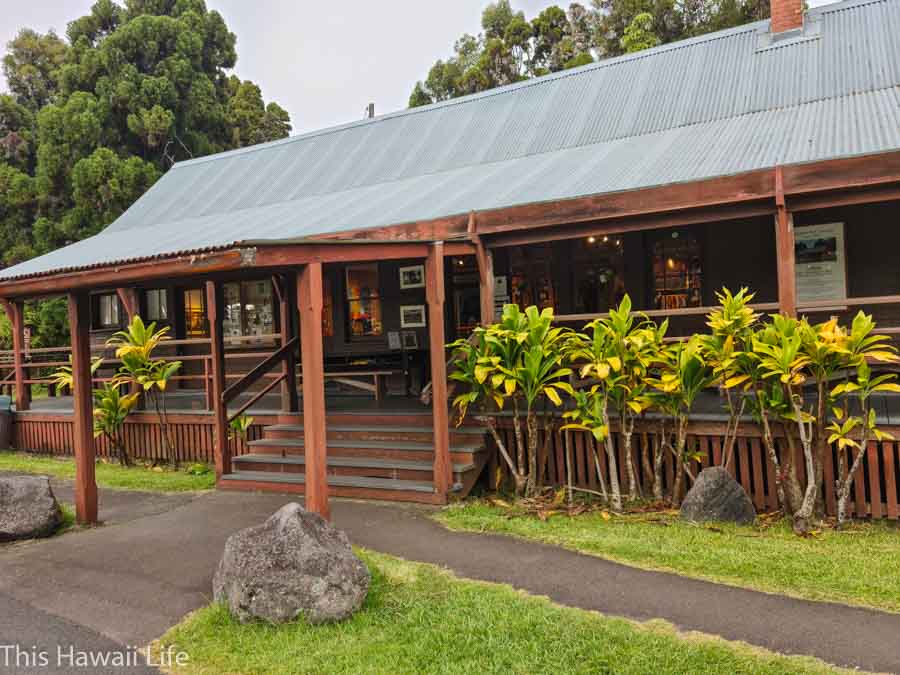
10. Volcano Arts Center
If you love to see beautiful artworks from local artists creating a variety of paintings, sculpture, furniture, ceramics and crafts from talented artist from the area, check out the Volcano Arts Center. The gallery is located right next to the visitor’s center in the old hotel that housed visitors to the park since the early 1900s. Check out more details to visiting the center here for more information.
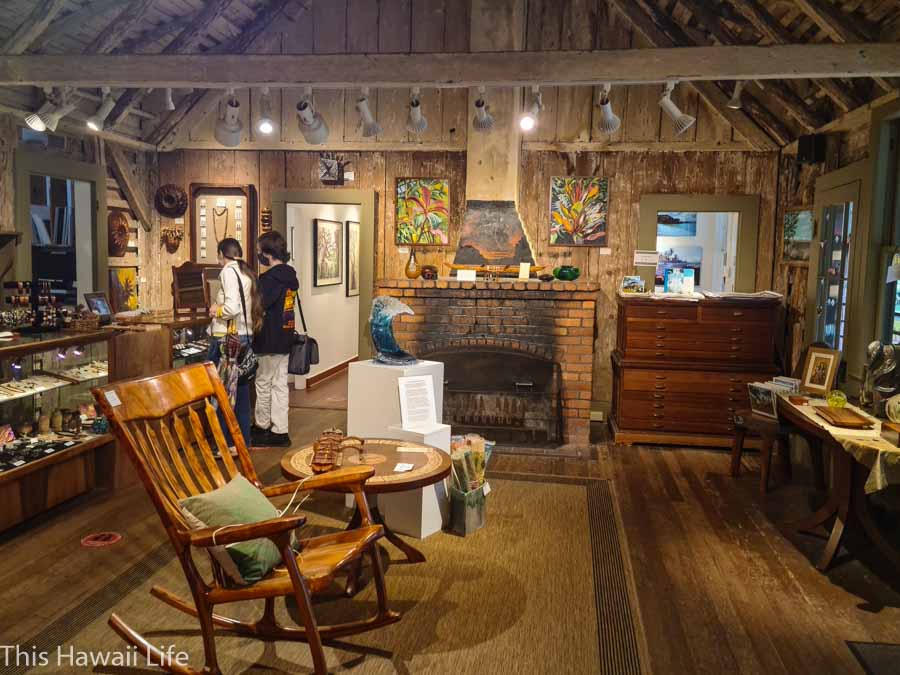

11. Enjoy a meal or Stay at Volcano House
The Volcano Lodge is open again for dining, shopping or a place to stay in the park and hanging out in this historic lodge is a fun way to enjoy a night or few nights right in the park and enjoy exploring early or late in the park. The huge lava rock fireplace is a great place to hang out on the rockers or sofa and they usually have fun talk story or music events held in this beautiful room for visitors to enjoy when they visit the lodge. There is a fantastic outdoor viewing area just outside of the dining rooms so you can see Halema’uma’u explosions right from the viewing areas or indoors if it’s too cold outside.
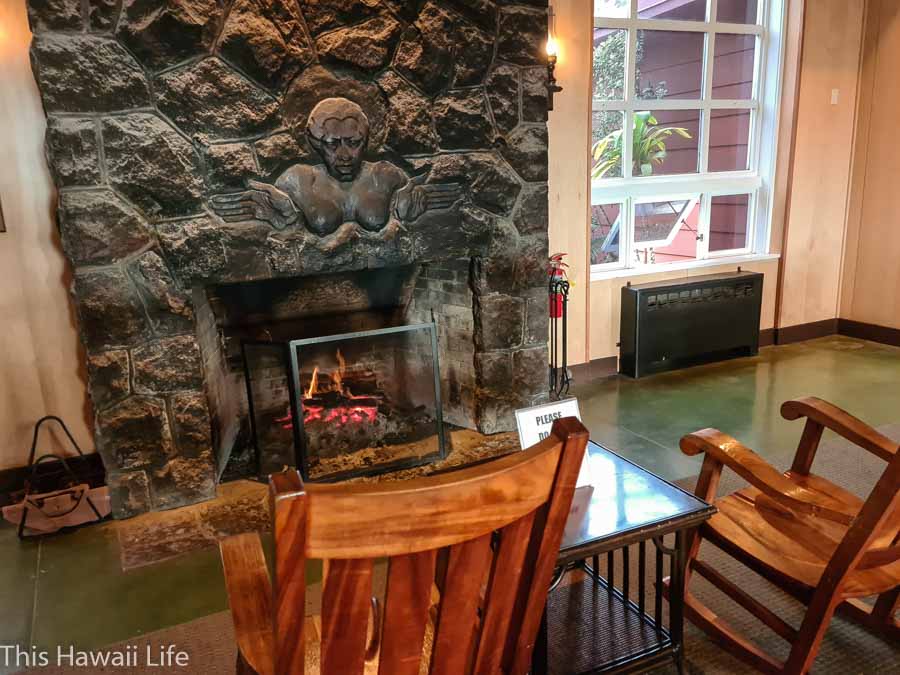
12. Explore the Sulphur Banks
The sulphur banks is little off the beaten path hike that takes you to a fascinating part of the park where few venture to visit. The sulphur banks trail is a short 1.2 mile roundtrip hike that goes through dense rainforest areas and into these exposed rocks where volcanic gas and steam seep out of the ground and rocky areas with a nice rotten egg smell. Large boulders and rocks are discolored into lava into mud colored brown and red stains that make this an interesting area to explore in the park.
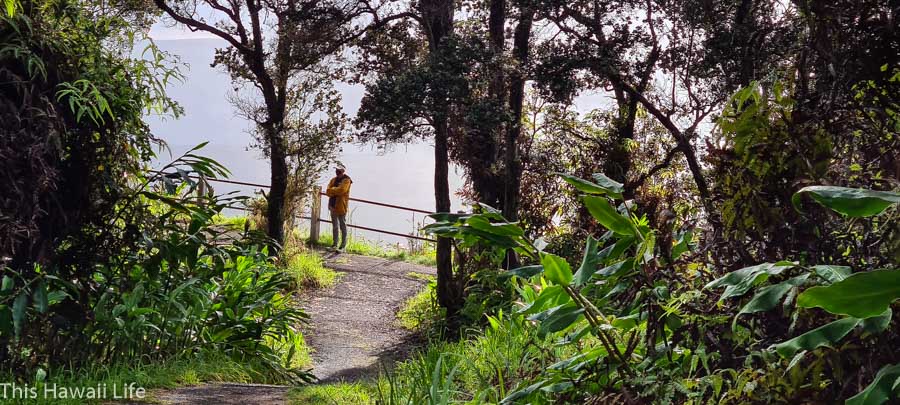
Video experience with lava viewing areas around the park
Check out my video experience below showing some of the best spots around the park to witness lava explosions, plumes and steam vents in the park caldera and Halema’uma’u crater below.
Weather and what to wear
The weather in Hawaii Volcanoes National Park is always variable so dress in layers and even a raincoat for wet weather in the park area. Wear sturdy shoes if you are planning to do hikes and a flashlight or head gear if you plan on doing early morning or night viewing of the crater.
Day time or night time visit to the park?
Most visitors come to the park during the day time to experience all the nature and gorgeous hikes to explore. But if the lava is erupting from the crater at Halema’uma’u, you might want to stay longer to get a spectacular show of the fiery red lava eruptions coming up from the crater floor.
Check with the website news or visitors center for more updated information on current activity happening in the park area.

Details to visiting Kilauea Volcano at Volcanoes National Park
The Hawai’i Volcanoes National Park is open 24 hours a day, every day of the year. Park entrance fees still apply for visiting Hawaii Volcanoes National Park.
General admission to the park is $30 which allows for a seven-day visit to the park (keep your receipt for proof). Walk in visitors are charged $15 per person.
You can also purchase a tri state pass for $55 which is valid for one year from the date of purchase.
Check out the details to fees and other details here for more information.
The Kilauea Visitor Center is located on Crater Rim Drive off of Highway 11 between the 28- and 29-mile marker south of Hilo and for more information check out their website here for more details.

Staying around Volcanoes National Park
Most of the lodging accommodations are close to the park entrance at Volcano Village but there is also the main park lodge and camping at the KMC camp area. Less than a five-minute drive Volcano Village has a variety of lodgings, inns and Air Bnb stays in the area.
Volcano House – the main lodge in the park is comfortable and historic where you can really unplug and enjoy the park from night to early morning before anyone is in the park area.
Volcano Forest Inn – A spacious inn with comfortable rooms in a forest setting, quiet location and friendly service.
Aloha Junction BnB – Located in the village, this plantation era home has spacious and comfortable rooms and a good complimentary breakfast.
Kilauea Lodge and Restaurant – An iconic lodge located in the Village with unique old world charm and modern amenities and service. Romantic rooms, public areas and gardens and some cool hikes in the area.
Check out more of the top listings and reviews here on TripAdvisor for places to stay close to Volcanoes National Park
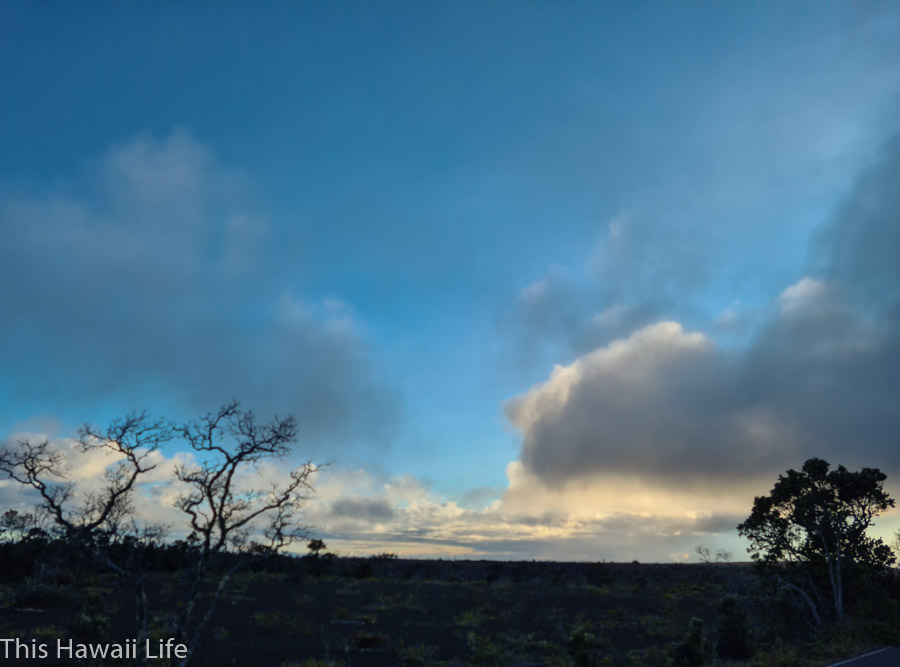
Check out our other posts on visiting Hawaii Volcanoes National Park
If you are exploring the park and other areas close by, check out our other posts below for more inspiration to visiting the area.
Lava eruptions at Volcanoes National Park
Why you should explore Hawaii Volcanoes National Park now
Explore Volcano Village in Puna
Exploring the Puna District in East Hawaii
Green Sandy beach at South Point
Have you been to the Hawaii Volcanoes National Park?
Please share your thoughts and other recommendations in the comments below with your recommendations.
Thanks for visiting today and checking out this post on Hawaii Volcanoes National Park. I hope you are inspired to plan a visit and enjoy these wonderful attractions. If you enjoyed the images and post, could you please share it with any of the social media buttons located around the post.
Disclosure – this post on a Hawaii Volcanoes National Park may have affiliate related links to brand offers which helps our site keep operating – we appreciate any purchases through this link and your supporting This Hawaii Life.


0 Comments
Trackbacks/Pingbacks